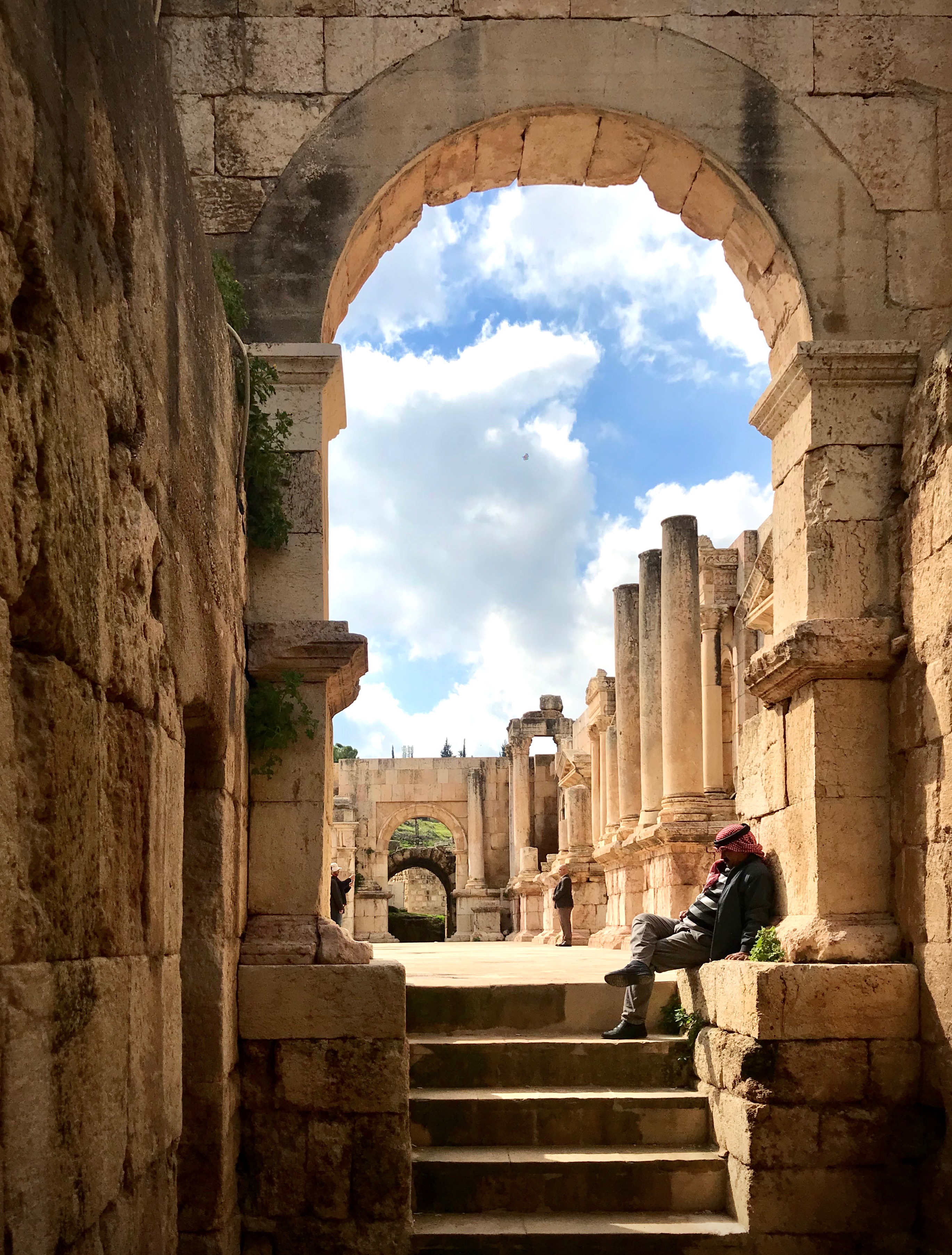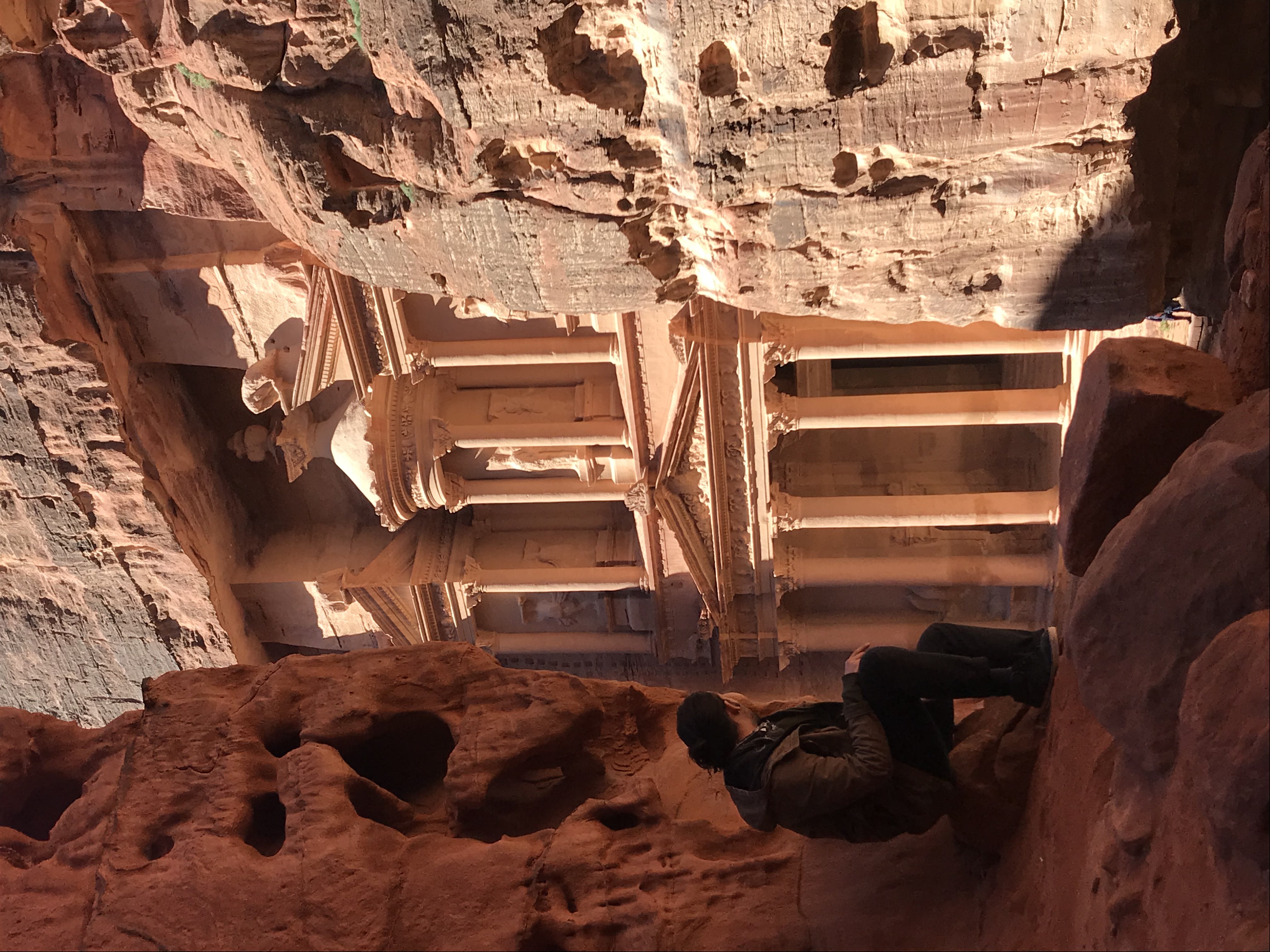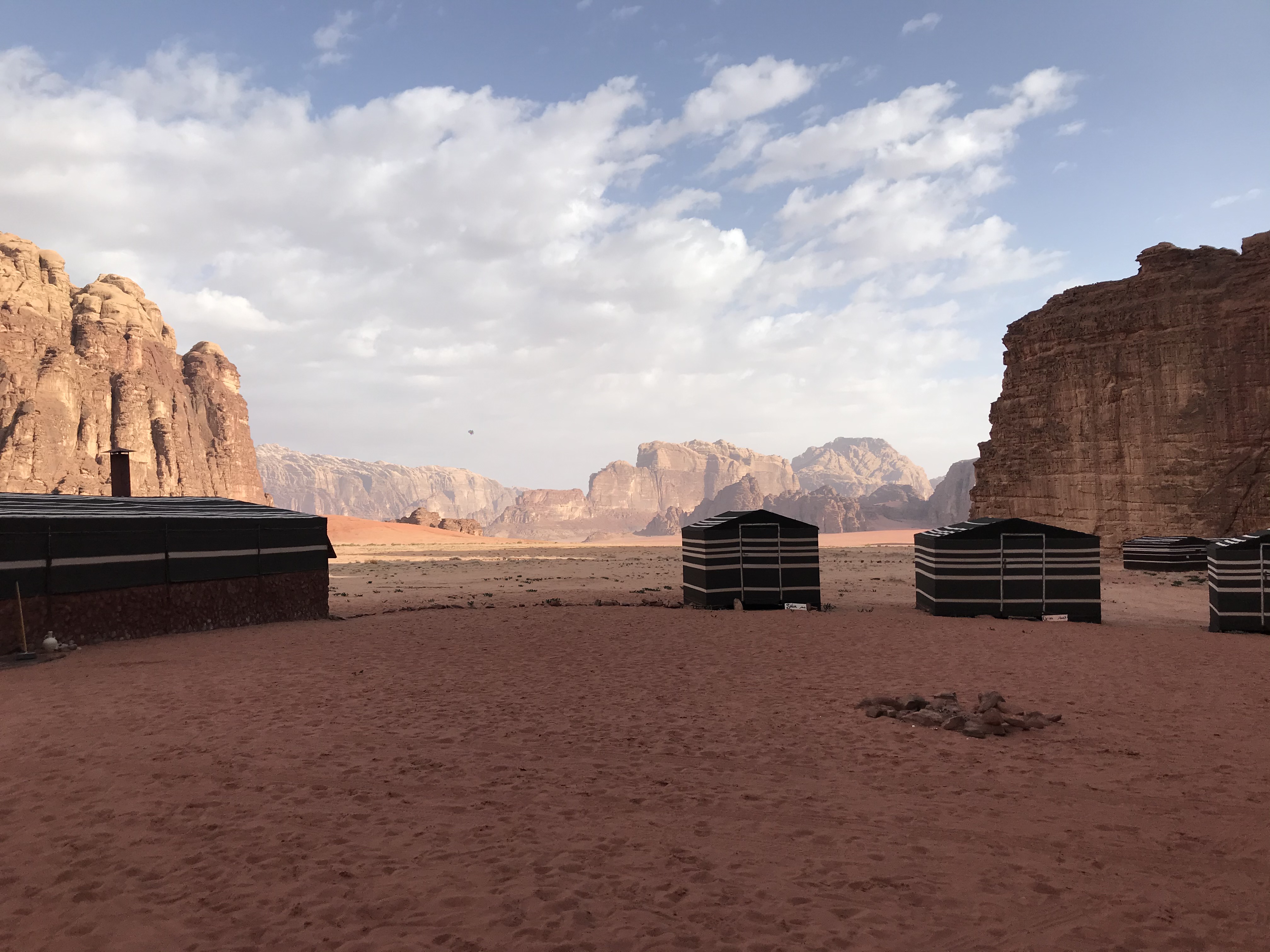Jordan was the first time I put a foot into the middle east and its whole complex mess, despite of the fact that the country has been living a peaceful time atleast in the recent years. The roman ruins of Jericho, the Jordan River, the Dead Sea and Petra were the highlights of my trip. Amman was our starting point. The city is divided in downtown and uptown, the first more chaotic and full of every kind of street shop, falafel shop and sweet stores. Between all those things you can find in the market, there are a few that I tried and Kanafeh (a sort of local pastry soaked in syrup and filled with cheese) is one of those. I have to say it is a bit too sweet for my taste, but I was happy to give it a go since it seems to be a thing over there and I also saw it frequently in the part of Berlin where I live that includes a big amount of Arab population. The uptown part of the city including Rainbow street is a bit more westernised with fancy coffee shops and bars and maybe a little less chaotic. The Citadel also deserves a visit. Inhabited since the Neolithic period (10000-4500BC) from many different civilizations (Assirian, Babylonian, Byzantines, Romans and so on), it is one of the archeological sites in Jordan that impressed me the most together with Jerash. The city is one of the oldest city in the world and nowadays it is still one of the best preserved Greco-Roman city. It is visitable on a day trip from Amman gives a certain feeling of being in the capital of Italy.

The Nabataeans were ancient nomadic Arab people, an independent civilization based in nowadays Jordan between 400BC - 200BC. They were annexed into the Roman Empire in 106AD and consequently converted to Christianity. The kingdom of Petra, capital of the Nabataeans, was built around 100BC and included a population of 20.000 people. Despite the roman annexation, Petra was a very important trading center until it suffered an earthquake in 363AD. It became popular in the west after a swiss traveler, Johann Ludwig Burckhardt, rediscovered it in 1812 and has been seen today as one of the 7 Wonders of the World.

The river Jordan gives the name to the country and it also has a strong religious value because it was the place where Jesus Christ was baptised. Driving about 40km south-east there is another biblical reference that can be visited, the mount Nebo, the place from where Moses saw the promise land but was not allowed to enter. From the top of the mount, it is also possible to enjoy a beautiful view on the valley.
Wadi Rum was one of the deserts that shocked me the most together with the Sahara desert in North Africa and the Pinnacle desert in Western Australia. It is unique in a certain way because of being shaped into granite rocks. On some of those rocks, it is also possible to see some inscriptions left probably from Nabateans in order not to get lost and to help other travelers along the journey through it. A must seen before embarking in this adventure is the movie Lawrence of Arabia taken from The Seven Pilars of Wisdom from D.H.Lawrence. We left Wadi Rum in the same we went in: on the back of a truck. The most beautiful experience I had in Jordan was also the end title of my adventure: a snowstorm. Despite of not having spent much of my life in a desert, I think it is still fair to assume that snow in the desert is not something that happens everyday and we have had sun during most of our stay. The very same morning when we left, heading towards Aqaba and towards a very tough period for humanity (the beginning of the pandemic), we went through a snowstorm while being taken back to the city, in the beginning of a sort of divine and beautiful nemesis who would mark the beginning of an era.

T.E. Lawrence is a name I came across many times while planning my trip to Jordan. The man was skilled: except from being part of the army, he was an archeologist, a diplomat and a writer. Laurence was initially sent to Egypt because of his role in the army and he had subsequently travelled around the middle-east and the Arabian peninsula. When the Arab revolt started in 1916 he fully supported it, giving a precious tactical help and claiming that Faisal I (statesman and king of Iraq) had to be the one that should lead the revolt. The uprising was partly successful: Damascus and Aqaba were captured and the future of the region reshaped at least until the creation of the state of Israel in 1948. The popularity of Lawrence skyrocketed and once back home he was awarded, became a full colonel and had the chance to work as an advisor directly with Winston Churchill. He died in 1935 because of the consequences of a motorcycle crash, his true and maybe only passion.
I AIN'T NOTHING What I am is what I say all the white lies and the words taken by the wind And I am nothing just an empty circle of breath a tamed animal who lost the instinct the fogginess of the promised land The bendages that I follow the waters where I swim are the only things that makes the world a place to be. (march '20)